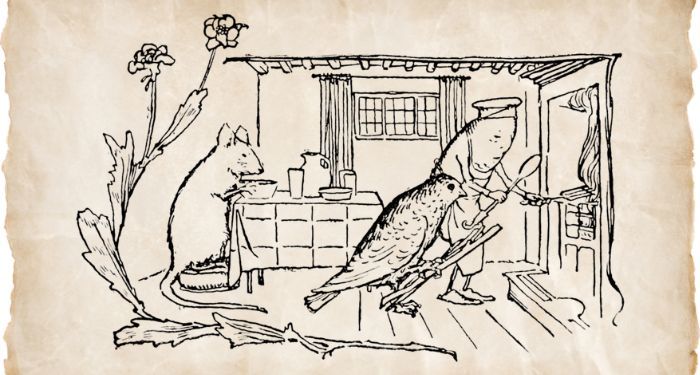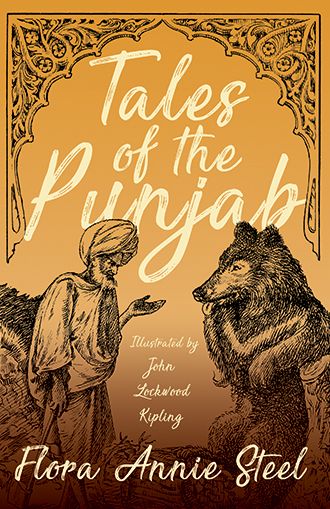
Would You Call That Happily Ever After? Strange and Obscure Fairy Tales
Fairy and folk tales are essential to us as people — whether we want them to or not, their morals have influenced how we experience relationships and friendships, how we take care of ourselves, and who we do and don’t trust as we move through the world. We know many of their plots and characters in our bones — who doesn’t associate a red hood or a mermaid tail with very specific characters? Even people who aren’t big readers have likely heard the same stories over and over; for instance, Snow White and Hansel and Gretel have been around since the Brothers Grimm’s Fairy Tales were first published in two volumes between 1812–1815.
But what about the less common fairy tales out there, the ones that Disney didn’t hire anyone to rewrite with a happy ending? There are so many. Just out there, forgotten, ignored, yet representative of what morals and values are emphasized in different countries and cultures. I want to share with you some of the weirdest fairy tales out there and so I did a deep dive into D. L. Ashliman’s Folktexts Digital library.
Ultimately, while I did try to seek out stories from cultures from varying backgrounds, my main criterion was that these fairy tales had offbeat narratives and unexpected endings. And, sadly, traditional fairy tale tellers were a very white and male bunch, so many of these stories likely come from white and male voices.
Popular culture may continue to remake and reboot the same 10 to 15 fairy tales, but you’ll know better because these wacky, enigmatic stories will make for great future conversations. When possible, I’ve included a book where you can find the story.
Strange Fairy Tales from Around the World
The Clever Apprentice (Scotland)
As a fan of sarcasm and dark humour, the story of the clever apprentice might be my favourite of the bunch. A snooty master tells his new apprentice that he wants to be called “master above all masters” and then lists a bunch of equally pretentious names for people and things around the home — the cat must be called Great Carle Gropus, the peat stack must be Mount Potago, and so on. Once the apprentice “had occasion to use all these words at once, and was able to do so without making a mistake”, the apprenticeship would be over. Well, the boy doesn’t waste time finding a way to use it all and free himself. The names given by the master are so camp and hilarious and what the apprentice does with them is a masterclass in petty. You can read the original story in Joseph Jacobs’ Complete Fairy Tales.
The Mouse, The Bird, and the Sausage (Germany)
Unleashed upon the world by the Brothers Grimm, this odd tale is about a mouse, a bird, and a sausage who become roommates and share household tasks. Now, one of these things is not like the other, my friends, and that weirdness is something I can’t help but appreciate — because yes, the sausage is anthropomorphized and she is a talented cook. Each roomie fulfills an important household function — the bird flies around looking for wood, the mouse carries water, starts the fire, and sets the table. The sausage, as I already said, is their cook. Bird goes out and meets another bird who mocks him, saying the other roommates are taking advantage and doing easier jobs. Because of this, the three agree to trade jobs; ultimately, that leads to all their demise. An interesting and outdated moral: stay in your lane or perish.
Sir Buzz (India)
In this story, a poor boy leaves his widowed mother to strike out into the world and find a fortune. Along the way, he helps a tigress remove a thorn from her paw, and she gives him a box as a thank-you gift. The box contains a small old man called Sir Buzz, a jaunty name for a genie who is tasked with fulfilling your heart’s desires. A very sarcastic Sir Buzz sasses everyone he comes across, and, eventually, he saves the boy and his future bride from a vampire. You can read the original story in Tales of the Punjab by Flora Annie Steel.
Never-Wash (Russia)
Did you know fairy tales were used to ensure people kept themselves clean? In the story of Never-wash, an out-of-work soldier is offered a job by a young devil: to stop shaving, cutting his hair, changing his clothes, and blowing his nose. For how long is this assignment? Fifteen years. Fifteen years without blowing your nose? During allergy season I blow mine 50 times an hour and we have better house construction.
The soldier, however, is not bothered and agrees to this task. If he completes it, he will be given money and the hand in marriage of a tsarevna. At the 14-year mark, the tsar needs money and asks the soldier for a loan. The soldier agrees that one of the tsarevnas will marry him. Daughters One and Two say “Nope, I’ll take my chances with the devil,” not realizing that their rhetorical statements are being written down by the actual devil. Daughter Three is basically like “I guess. Hopefully, God has a sweet plan for me.” The soldier pays the tsar and, while waiting for the wedding, the 15 years end. The devil then “cut him up into little bits, threw them into a cauldron, and began to brew him — brewed him, washed him and collected all his bones, one by one” and then splashes the water of life onto these bits. So the soldier, now hot, marries Bachelorette Number Three and their life is great. When an older devil finds this out, he is furious that the young devil was unable to corrupt the soldier in that time. But then the young devil points out that he got the two other princesses, and so his grandpa devil decides all is right in the world.
The Disobedient Daughter Who Married a Skull (Nigeria)
In this Nigerian tale, Afiong is beautiful and headstrong, and will not abide by her parents’ choice of suitors. They keep bringing her old, ugly rich dudes. A disembodied skull, living in the spirit land, hears of Afiong’s beauty and wants to take her as his wife. He borrows people’s body parts one by one and becomes a “very perfect specimen of manhood.” Afiong goes off with the skull and comes to discover he is not the handsome dude she hoped for, plus it turns out he (a) lives with his mom and (b) lives in a land of cannibals who will eat her once they suss her out. But Skull’s mom has grown to love Afiong and so she helps hide her and eventually sends her home safely on the wind. She goes home to her folks and agrees to never again date someone from outside her land. So the moral is basically don’t talk to strangers, which is fair enough. You can find this story in Folk Stories from Southern Nigeria and West Africa.
The Ungrateful Son (Germany)
This paragraph-long tale by the Brothers Grimm is about a selfish son who hides food from his father. After Hungry Papa leaves and he retrieves his chicken, lo-and-behold, that culinary delight has become a live frog who jumps onto the son’s face and won’t leave. This frog is so menacing that no one tries to remove it and the boy has to feed it or it will eat his face. Wow. The younguns really didn’t want to share in those days and the Grimms thought, “Man, how do we teach this to them so they won’t soon forget?” This story is the J. Walter Weatherman for Germany’s 19th century kids.
The Story of the Rat and Her Journey to God (Romania)
I want to start by saying that I do not condone the message which appears to be, perhaps, don’t love yourself. In this Romanian tale, our main character is a rat with very good self-esteem. It seeks out god for a little chat, asking the sun, the clouds, and the wind for its whereabouts. The wind rudely grabs and “hurl[s] him down onto an ant-heap, and there he found his level.” (Yes, the title implies that the Rat is female but in the story, male pronouns are used.)
The Bald Man and the Hair-Restorer (India)
A short tale from India that falls under the heading of Bald Stories. And can you believe enough bald-focused fairy tales exist for that to be a heading? Anyway, a rich bald man is swindled by a couple of con artists, one of whom is bald himself despite claiming he’s capable of curing baldness. The rich dude never gets that he is being conned so the ending fell flat. The moral is that con men are good at tricking fools which, sure, that’s their job.
So, there they are — eight strange fairy tales that maybe you’d never heard of before. For more fairy tale reads, we suggest these must-read fairy tale retellings. We’ve also got queer fairy tale retellings and middle grade fairy tale retellings, too.















